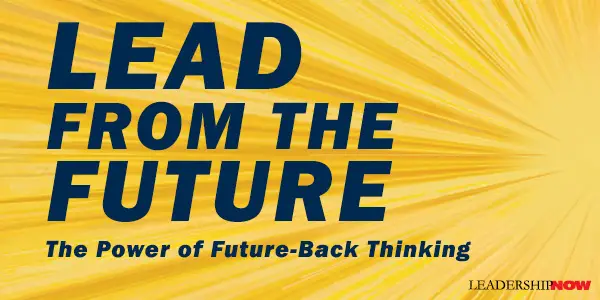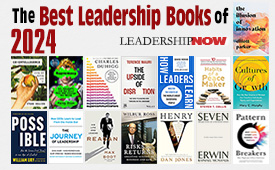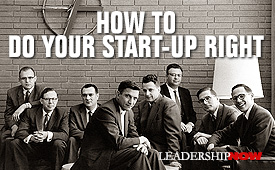 |
 |
04.02.21

Lead from the Future
THERE is present-forward vision, and there is future-back vision. There is a difference. Present-forward thinking will get you incremental change and often leaves you stuck in the present. Future-back thinking expands your horizon to see opportunities that are beyond your core business. Future-back helps you quiet the noise today to see the faint signals that could disrupt your business or activities tomorrow. In Lead from the Future, Mark Johnson and Josh Suskewicz describe future-back thinking as “a way of seeing and being in the world.”  While we need to master the present, we can be lulled into thinking that the future will take care of itself because we are making our quarterly numbers. Most founders are future-back thinkers, but “most incumbent organizations are led by people who are much less future-thinking than their founders.” And understandably so, we must succeed in the present. But if we are to survive into the future, we need to be capable of mastering the future too and turn that vision into action today. Present-forward thinking is high in knowledge and driven by known rules, facts, and data; future-back thinking is low in initial knowledge and high in assumptions—its aim is to discover what could be true. The authors offer a three-step process to help leaders develop visionary strategies and bring them to life. 1. Develop Your Vision Identify the potential inflection points in your industry and focus on the timeframe when they are likely to occur. 2. Convert Vision to Strategy To connect your vision of the future to a concrete plan for what you must do today to bring it to life, you need to develop three portfolios: future state portfolio, innovation portfolio, and an investment portfolio. These are “continually updated and tracked as you reshape your vision based on the new learning that comes over time.” The future state portfolio helps you identify your growth gap – what you will need to provide beyond what you are capable of delivering presently to reach your vision. These needed capabilities become your innovation portfolio. Develop an investment portfolio in which you formalize your decisions about where to invest and where your resources will come from. In building it, you should measure dollars but also people and leadership mindshare, as talent and leadership energy are often more scarce in big companies than seed funding. 3. Program & Implement the Strategy Just as a vision needs to be translated into a strategy, a strategy must be carefully programmed into an organization before it can be effectively implemented. The leadership framework shown below highlights the mindsets for both present-forward and future-back leadership. It is not an either/or proposition. The most successful leaders will be those who can do both as needed. A leader described the left side as “serious, disciplined, and self-critical” and the right side as “aspiration, optimism, and risk orientation.”
In The Innovator’s DNA, Clay Christensen identified five attributes that correlate closely with Future-Back Leadership: associating, questioning, observing, experimenting, and networking. Business innovators are sponges for unfamiliar ideas; as such they seek out conferences and other venues to exchange and combine their ideas. Once you understand the principles presented here, you can begin to look at everything with a future-back mindset—including your own life. We need as leaders to have and immerse our teams and organizations with a learning mindset. The tyranny of the present quickly pulls us back into a short-term present-focused mindset. We need to look for the balance and link the present with the future. Future-back needs to become an organizational capability, led at the top, and permanently embedded in leadership mindsets, strategic planning processes, and organizational culture. 
Posted by Michael McKinney at 07:05 AM
|
BUILD YOUR KNOWLEDGE
 

How to Do Your Start-Up Right STRAIGHT TALK FOR START-UPS 
Grow Your Leadership Skills NEW AND UPCOMING LEADERSHIP BOOKS 
Leadership Minute BITE-SIZE CONCEPTS YOU CAN CHEW ON 
Classic Leadership Books BOOKS TO READ BEFORE YOU LEAD |